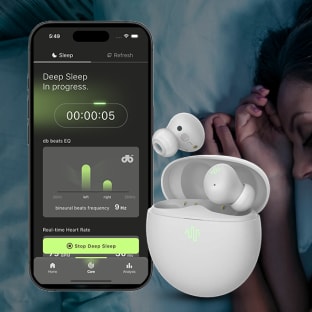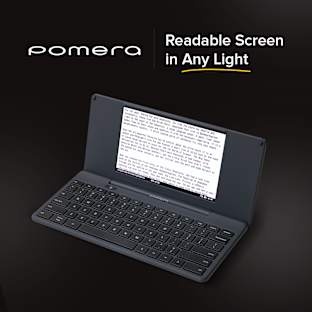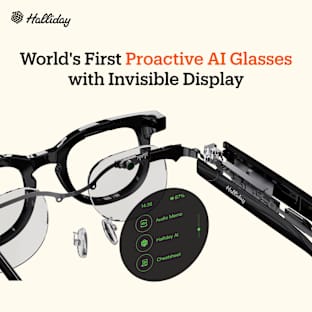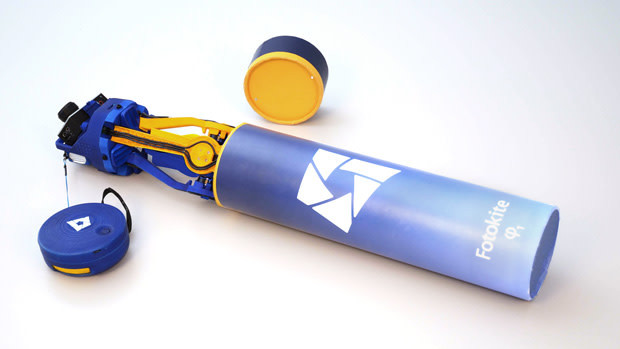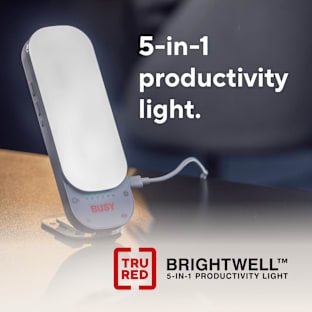In the coming months, we will be tackling tasks in different parallel workstreams: design, development and production.
We are dedicated to our timeline and will keep you regularly updated on the status of our progress. We are also committed to transparency and keeping our Fotokite Phi fans and Indiegogo backers informed.
![]()
Fotokite was born with one mission: making aerial photography accessible to everyone. Our dedicated team combines skills and experience in robotic engineering, electronics and industrial design to build the Fotokite Phi.
![]()
The Fotokite was born at ETH Zurich’s Flying Machine Arena, one of the world's most advanced research lab in aerial robotics. While finishing his PhD, at the Arena, Sergei was struck by the growing power and popularity of drone photography. Frustrated by overly complicated existing systems, he set out to build something more robust, and eventually arrived at using a taut tether to sidestep fundamental drone limitations.
So the Fotokite was born with one mission: making aerial photography accessible to everyone. Specifically, we aspire to solve fundamental drone issues: safety, need piloting skills, lack accountability, complex regulations and limited flight time.
After a debut at TED2014 (Sergei is now a TED Fellow), the company developed its first product: the Fotokite Pro, a live broadcast aerial camera that can fly for hours thanks to being powered from the ground. The Fotokite Pro was presented for the first time at NAB2015, and has been used for several productions and is being evaluated for more.
Working closely with the broadcasting industry on a professional solution gave Fotokite the experience to start working on a more affordable version: the Fotokite Phi. By being able to shed core drone components such as expensive GPS receivers and by getting rid of an RC controller, we have been able to build what is, to our knowledge, the lightest, friendliest, safest, most portable and most affordable GoPro quadcopter yet.
![]()
![]()
Read more![]()
Read more![]()
Read more
![]()
![]()
1. Customer Service
Q: What is your refund policy?
A: Contributors requesting a refund will have to reach out to your team directly (via contact@fotokite.com). We will refund your pledge minus the fees that we paid to IGG/PP which is about 10%.
Q: What will be the Fotokite Phi’s retail price?
A: We project the Fotokite Phi will retail for around US$500.
Q: What's up with shipping to Switzerland?
A: Shipping to Switzerland is $40, same as EU. While the Phi is developed and designed in Switzerland, final assembly is done elsewhere (most likely Hungary or China), due to pretty clear-cut cost/sourcing constraints. So we have to get the units shipped to Switzerland just like to any other place. Yes, making stuff and shipping it costs something -- we're being upfront with you rather than having one more excuse to not deliver on time later. Perhaps one day these guys will fly themselves to you for free ;-)
2. Product
Q: Why does the Fotokite Phi have a tether?
A: That's how the Fotokite knows where it is: the tether is always taut, and by "seeing" the tension force for Fotokite can maintain a stable position next to you. In addition, the tether solves fundamental interaction and safety problems: more an intelligent kite than a drone, it provides novel interaction (five-minute training) and clear accountability.
Q: Would it have the same effect if I attached a tether to another drone?
A: No, it wouldn’t, nor would the Fotokite Phi work without the tether - it is core to how the Phi operates: Instead of relying on a GPS or radio signal for localization/control the Phi uses the tension force from the tether to figure out where it is. This means controlled flight no matter where you are: it is a completely self-contained system.
Q: How long can the Fotokite Phi stay in the air?
A: The current prototypes fly for around 8-10 mins. (We've had to make the prototype batteries smaller as some prototype components, e.g. electronics and frame, are currently heavier than planned). We aim for 15min minimum for production units. Note that flight time may vary depending on conditions (e.g. windy conditions --> generally lower flight time). The batteries are in-field swappable.
Q: How can the Fotokite Phi follow me during flight?
A: Thanks to its embedded sensors, the Fotokite Phi constantly measures the angle of the tether relative to you. The Phi's world is literally centered on its user -- so when you move, it naturally moves with you.
Q: How does the Fotokite Phi behave in wind or rain?
A: Wind: The Fotokite will not crash; it will fight the wind. However, very windy conditions may affect the stability of the video footage.
Rain: While the Fotokite works in light rain, we would not recommend using the Phi in serious "wet" conditions. The folding mechanism makes splash-proofing difficult, though we're keeping this in mind. We do not recommend operating the Fotokite Phi during rainy weather.
Q: Do you support night filming?
A: The Fotokite Phi is visible in the dark, as it is equipped with flashing LEDs at the front. Therefore, you always know where the Fotokite is in the air and how it is oriented. The definition of night shots will depend on the GoPro camera’s definition and ground luminosity.
Q: How long is the leash?
A: Currently, the Fotokite Phi’s smart leash is 8 meters (26ft) long.
Q: What are its safety features?
A: The tether is the first and most important safety feature: no fly-away scenarios! The system is very lightweight and uses flexible plastic rotor blades, safer than usual propellers. In addition, if one of the four motors stops, they will all stop, preventing the blades from spinning against something. Finally, the entire system is also extremely lightweight (~12oz), reducing the chances of serious accidents.
Q: What happens if the tether is cut / the battery runs out?
A: On empty battery / tether break detect the Phi goes into a "controlled descent" mode, where it comes back to the ground quickly, but gently.
Q: What are the legal restrictions for flying the Fotokite Phi?
A: We strongly encourage flying responsibly. Thanks to its tether, the Fotokite is welcomed by safety experts as a safe, reliable way to access aerial perspectives, especially near crowds. The Fotokite has been exempted from aviation regulators in both Switzerland and France. However, legal restrictions vary from country to country, so we recommend to always checking your country’s regulations of your country. A good source for flying in the United States is Know Before You Fly.
3. Company
Q: When was your company founded?
A: Perspective Robotics was founded in March 2014. The company grew out of a research team from ETH Zurich, one of the world’s leading universities for technology and natural sciences. The core algorithms for our products were developed and refined over three years of PhD work at the Flying Machine Arena at ETH Zurich, and are protected by a patent application.
Q: What’s your track record in the field of robotics or drones?
A: Our first product, the Fotokite Pro, was developed in 2014. It is designed for professional news broadcasting. Key players in this field have tested and bought our products.
Q: Why are you crowdfunding?
A: We are almost ready to start manufacturing the Fotokite Phi on a commercial scale. But before that, we need to raise funds to generate plastic moulds so we can produce the Fotokite Phi in large quantities at a reasonable price. Your pre-orders will help pay for the moulds and confirm for us that people really do care about simple, safe and affordable aerial photography.
